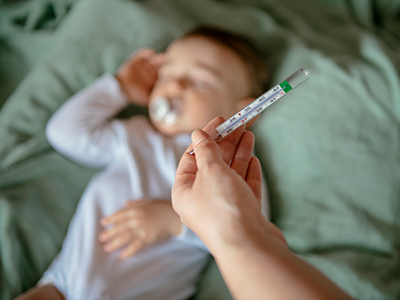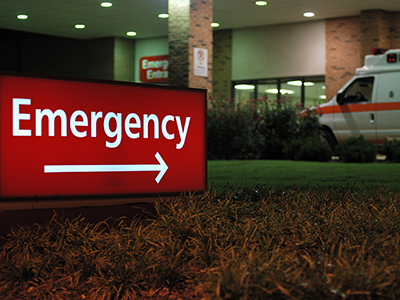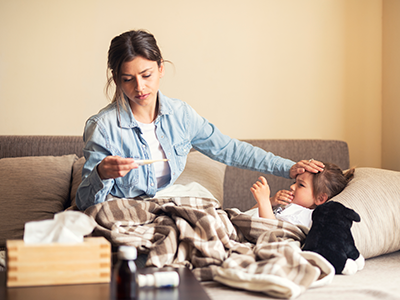Going to the emergency department is a scary and overwhelming experience for both parents and children. We have outlined some things to consider before you go as well as what to expect once you are there to try to make your experience as smooth as possible for you and your child.
First, call your doctor
Unless your child is experiencing a life-threatening emergency, we encourage you to first call your doctor before taking them to the emergency department. Your doctor can help you decide if it is truly necessary for you to go to the emergency department, or if there are things that you can do at home to help your child. It is also helpful for your doctor to know what is going on, so that they can check up on your child to see how they are doing.
How to prepare
- Remain calm: Going to the emergency room can be very stressful, but if you remain calm, your child will be more likely to stay calm as well.
- Tell your child what to expect: It is best to explain to your child what they can expect to happen before they get to the emergency room. Knowing what is about to happen can help to relieve their anxiety around the situation.
- Bring a comfort object: If your child has a special, loved object, such as a stuffed animal, blanket or toy, it can be helpful to bring this with you to help them feel more comfortable being in a new and scary place.
- Consider snacks: You may be waiting in the emergency room for a long time with limited food available. If you know that your child likes to snack, consider bringing some with you. However, you must first confirm with your child’s provider that it is safe for your child to eat and drink before giving them any food.
- Healthcare information to bring: Make sure you bring your child’s insurance card with you. It can be helpful to bring your pediatrician’s contact information and your child’s vaccination records as well, though this is not required.
- Limit the number of people with you: Emergency departments often consist of small rooms with limited seating. If you can avoid it, try not to bring many people with you.
Once you arrive
- Triage: Your first stop will be triage and registration. While you are here, a nurse will ask some questions to understand what is going on and how quickly your child needs to be seen by a medical provider in the emergency room.
- Waiting: Once you have been seen by the triage nurse, you will wait to be taken through to the emergency department. A nurse will also take your child’s vitals — temperature, heart rate, blood pressure, respiratory rate, oxygen saturation and weight. Wait time can be very variable and unpredictable depending on how sick your child is, how many other people are there and how sick other children are. The children with the most serious and life-threatening medical conditions are always evaluated first. If you find yourself waiting for a long time, this is actually a good thing because it means that your child isn’t seriously ill or hurt! However, if you notice that your child is becoming sicker or that their condition is worsening while you are waiting, you should alert the triage nurse.
- Distract your child: It can sometimes be difficult for children to sit in the waiting room for long periods of time. It can also be stressful for them to be around other sick or injured people also in the waiting room. If you have any toys or books with you, these can be helpful to distract your child while they are waiting.
- Remain calm: It can be distressing to have to wait for long periods of time for your child to be seen, but it is important to continue to be as calm as possible so that your child remains calm as well.
Being seen by the medical provider
When a medical provider is ready to see you, you will be called from the waiting room and brought through to the emergency department.
- Rooms: Depending on the emergency department, your room may be either a private room or a shared room blocked off by a curtain; be prepared for either.
- Speaking with the medical provider: Once you are in a room, a medical provider will come to ask questions about what is going on with your child. They will also want to know about your child’s medical history, including:
- If there were any complications during your pregnancy or after your child was born
- If your child has any medical problems
- If your child has ever had surgery
- Allergies (especially to medications or food)
- Medications that your child takes every day (or any medications that they were given recently)
- What medical conditions run in the family
- If your child has received all the typical vaccines for their age
- Who your child’s pediatrician is
- Waiting: Even after you’ve been taken back to a room in the emergency department, you will likely still spend significant time waiting. Please remember that this is just because the providers are doing a lot of work to take care of your child “behind the scenes,” and many tests that they do often take a while to be completed and resulted. You and your child are valued, and your providers are doing their best to take good care of your child!
- Advocate for your child: You know your child best! If you think that the provider taking care of your child is missing something, please tell them. Please also ask questions if you don’t understand the testing that your provider has ordered or their treatment plan.
Leaving the Emergency Department
If your child’s condition is serious enough that the medical provider taking care of them doesn’t think that it is safe for them to go home, your child will be admitted to the hospital. However, most children who come to the emergency department can be discharged home safely after completing testing and/or receiving treatment.
- Discharge paperwork: Just before you leave, one of the providers taking care of you will go over discharge paperwork with you, which typically explains your child’s diagnosis, treatment that you can do at home and reasons to come back to the emergency room. It is important that you listen to these instructions carefully so that you can take the best care of your child at home.
- Ask questions: Please feel empowered to ask your child’s medical provider any questions that you have before leaving. This will also help to ensure that you are comfortable taking care of them after you leave.
- Follow up with your pediatrician: This is an extremely important last step! Your child’s pediatrician knows them best, so it is important for them to check up on your child 1-2 days after they were seen in the emergency department. This is so they can be up to date about what is going on with your child, and so that they can make sure that your child is doing okay. Often the emergency department will send paperwork to your child’s pediatrician to explain to them what happened while they were seen there, but it can also be helpful to bring any papers that were given to you in the emergency department.
Other resources
 https://riseandshine.childrensnational.org/wp-content/uploads/2019/09/Emergency-department-sign-feature.jpg
300
400
Rise and Shine
https://riseandshine.childrensnational.org/wp-content/uploads/2017/11/childrens_riseandshine_logo.jpg
Rise and Shine2022-11-22 07:00:532022-11-22 11:35:08When to take your child to the emergency department
https://riseandshine.childrensnational.org/wp-content/uploads/2019/09/Emergency-department-sign-feature.jpg
300
400
Rise and Shine
https://riseandshine.childrensnational.org/wp-content/uploads/2017/11/childrens_riseandshine_logo.jpg
Rise and Shine2022-11-22 07:00:532022-11-22 11:35:08When to take your child to the emergency department


 Lauren Dzera, MD, is a pediatric resident at Children's National Hospital with an interest in pediatric emergency medicine.
Lauren Dzera, MD, is a pediatric resident at Children's National Hospital with an interest in pediatric emergency medicine.






Leave a Comment
Want to join the discussion?Feel free to contribute!